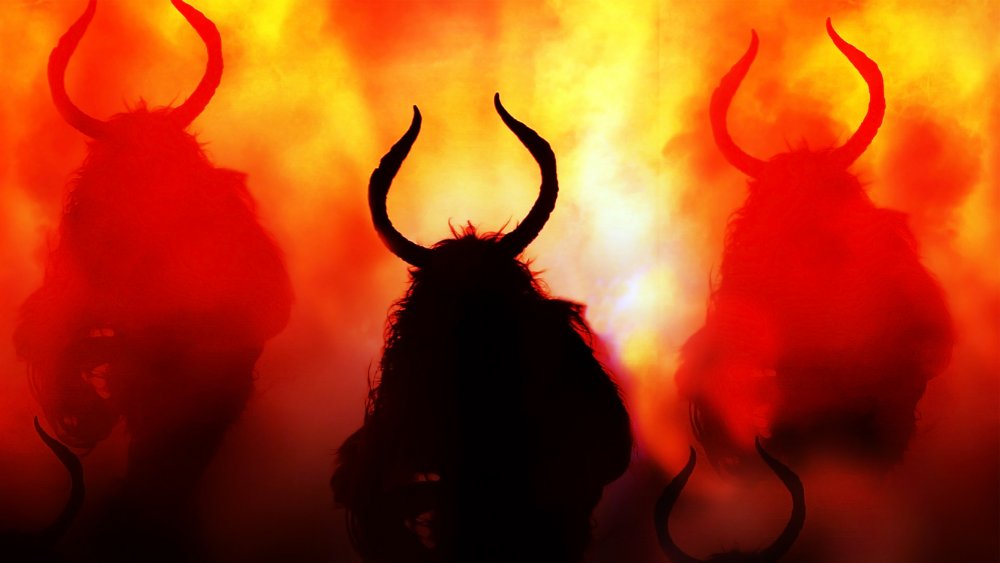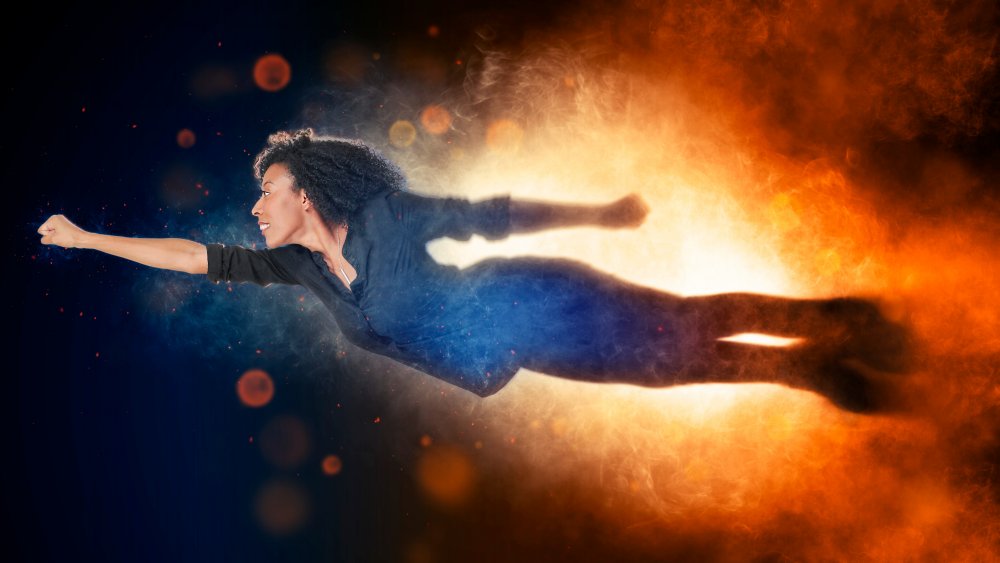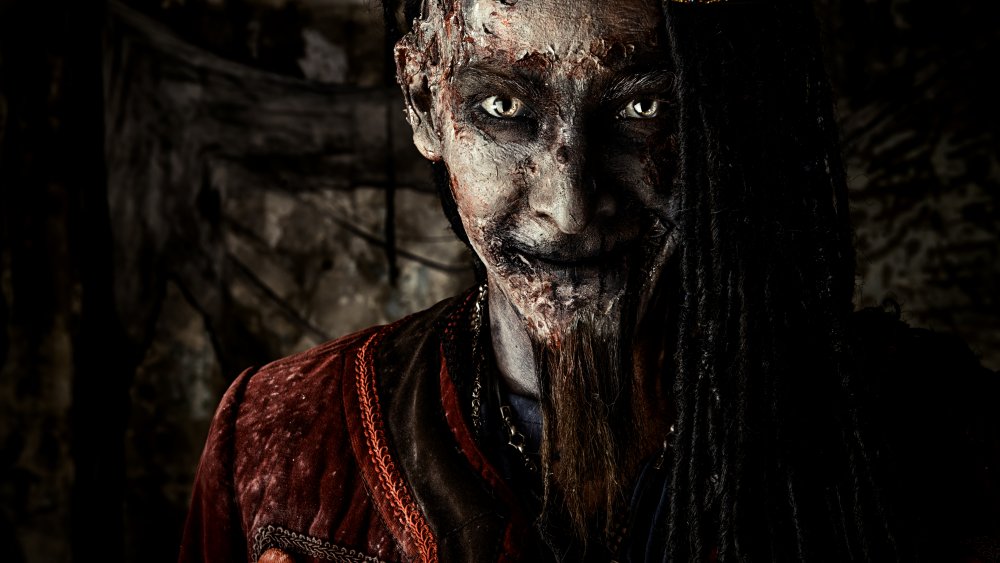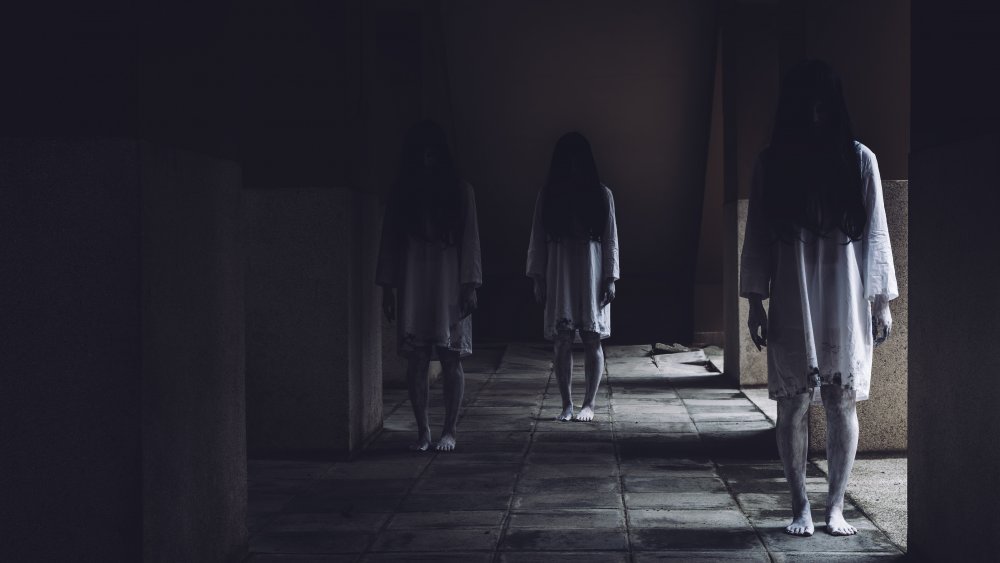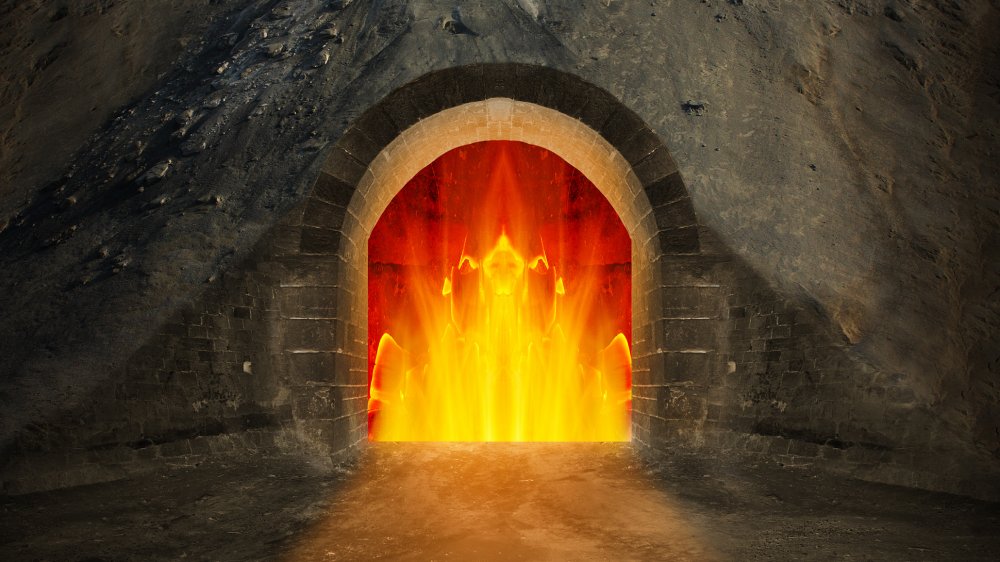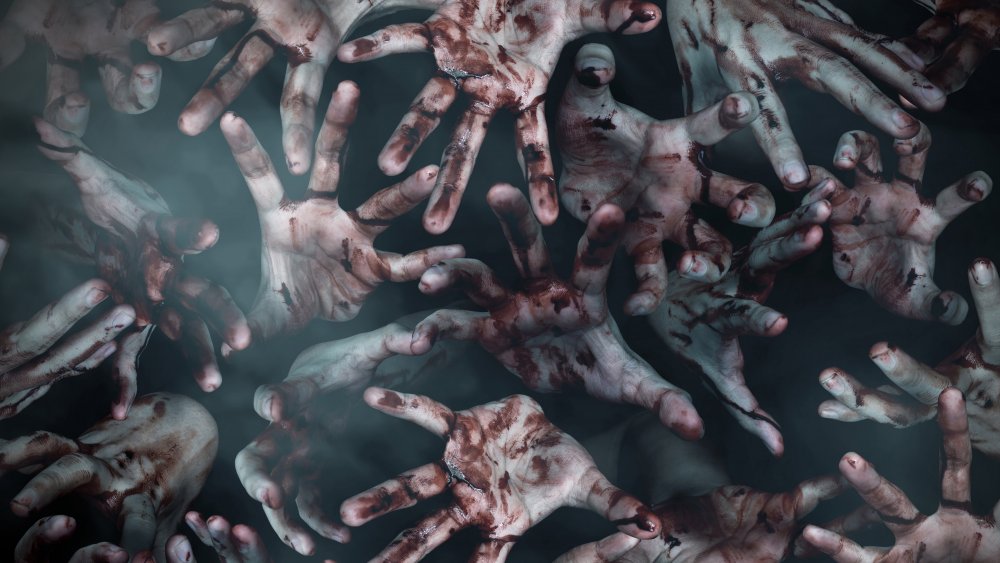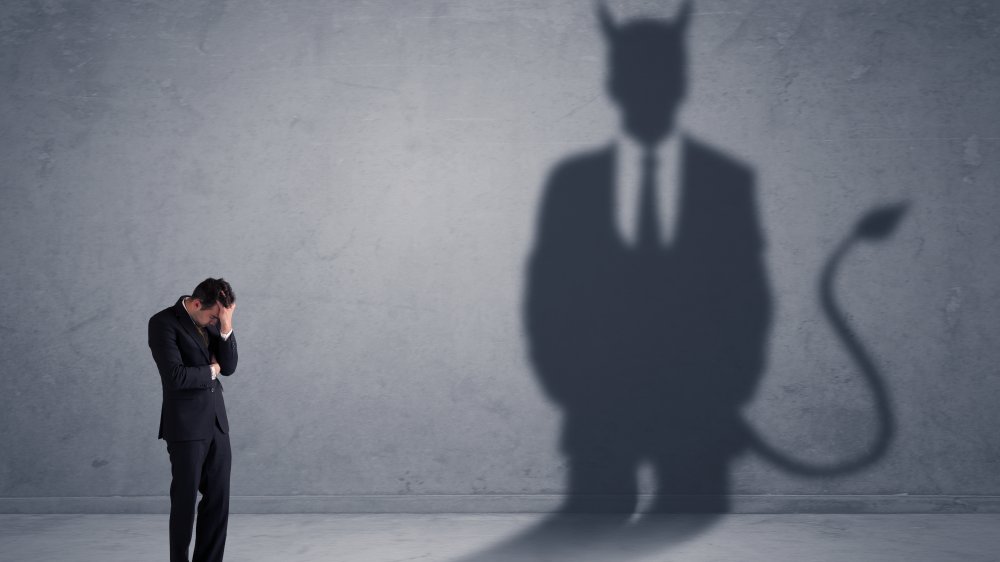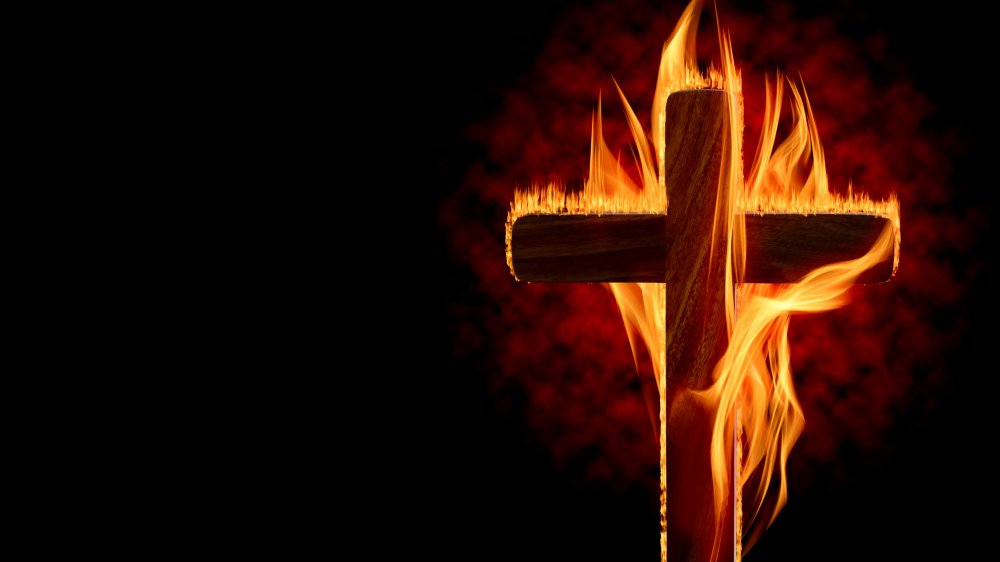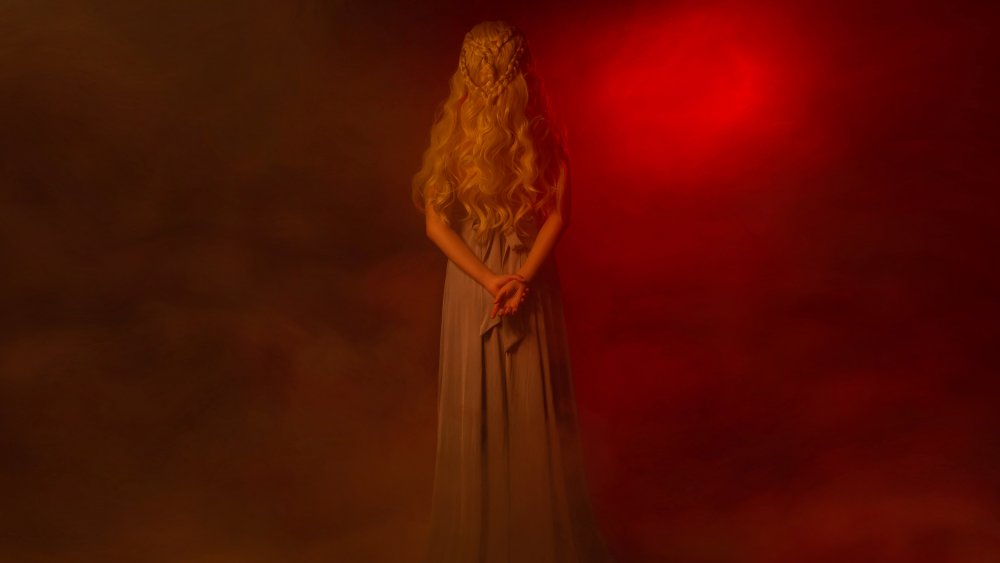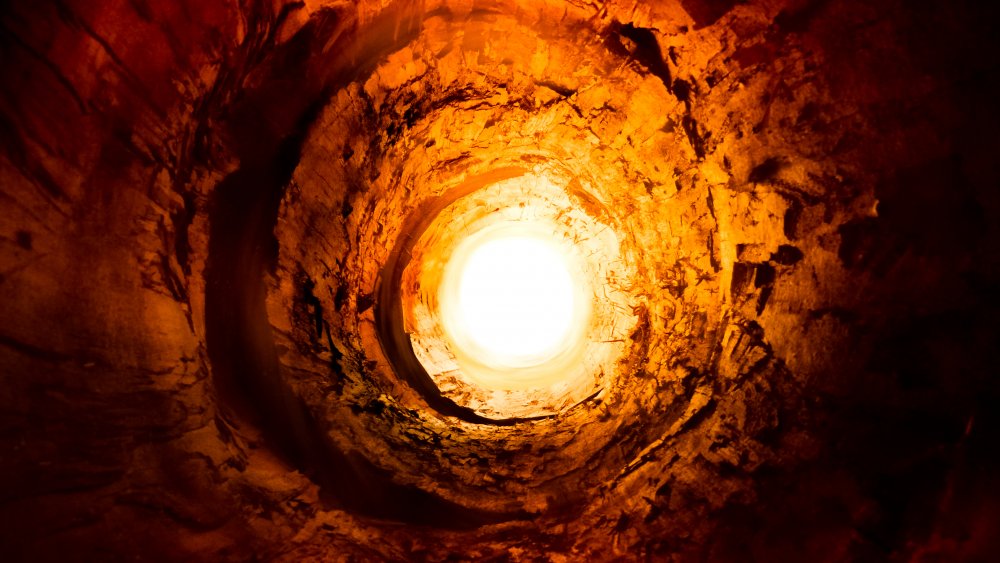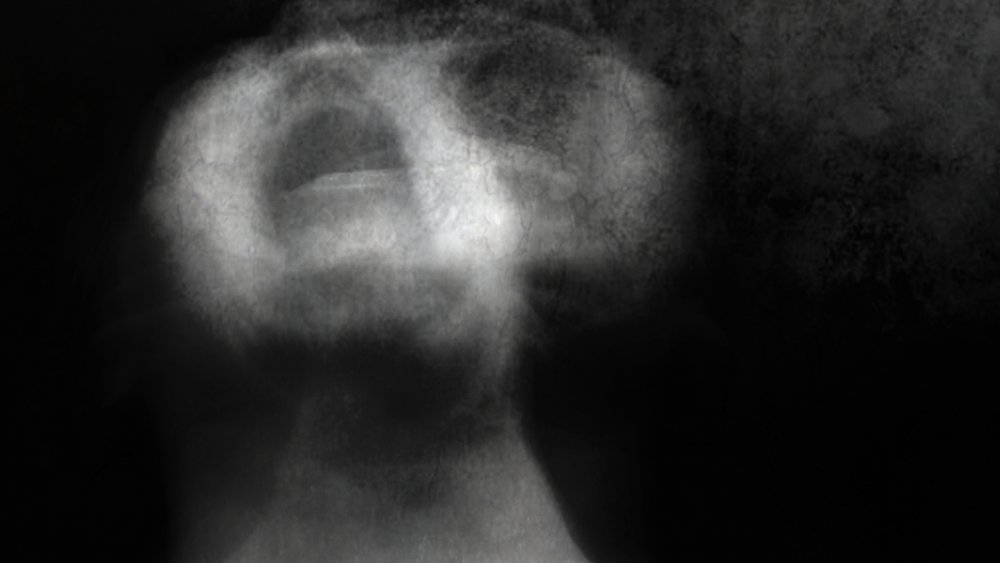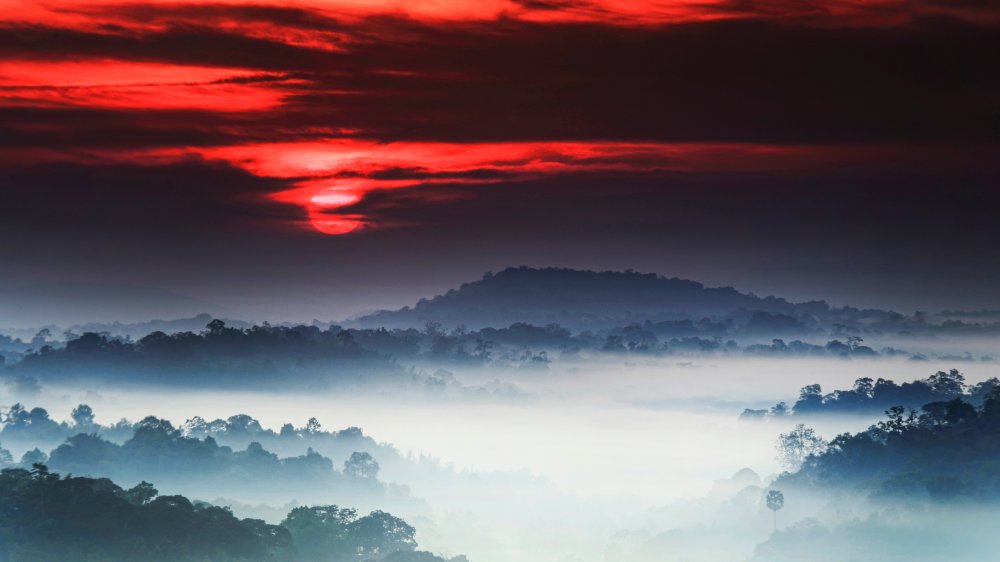What Hell Is Really Like, According To The People Who Have Been There
There's no definitive answer about what comes next, after this lifetime... and that's kind of terrifying. We've been arguing — and even going to war over it — for a long, long time, but one thing we sort of agree on is that there's going to be some kind of karmic justice. The bad people? They're going to hell.
But... what is hell? Jean-Paul Sartre is often credited with suggesting that "Hell is other people," (via Vox), and that's kinda legit. When it comes to the popular idea of a physical place where sins are punished by demons who really like their jobs, you might be surprised to find that comes to us thanks to Dante and The Divine Comedy, which the BBC says has influenced almost every modern depiction of hell out there. That's where we get the idea of circles of hell, and some truly horrible stuff... which raises some important questions about Dante.
It's also very similar to what three children were shown on July 13, 1917. According to the National Catholic Register, the children of Fatima were presented with a terrifying image of flames, smoke, and blackened, burning demons. The Virgin Mary tasked them with spreading a warning and saving souls, and seriously, that's a lot to put on a couple of kids.
So, here's a question: what about the people who have died... and come back? What did they claim to see? It's not always what you might think.
Hell might just be a vast emptiness
In 2014, researchers from the International Association for Near-Death Studies published their findings on what hell is — according to those who'd been there — in Missouri Medicine, The Journal of the Missouri State Medical Association. They found that when people came back from the dead and reported on what they'd seen there, there were definitely categories their reports fell into. One type of the so-called "distressing near-death experience (NDE)" was the void.
In these cases, people found themselves in an eerie, empty void with, well, a whole lot of nothing. One woman who briefly died during childbirth said that she had felt herself flying up and out of the hospital, until she was out in the middle of outer space... where she was left, floating and alone. Another woman, who also died briefly in childbirth, remembered a similar situation, saying, "I realized that this was eternity; this was what forever was going to be... I felt the aloneness, the emptiness of space, the vastness of the universe, except for me, a mere ball of light, screaming."
So, yikes. It's not just a childbirth thing, either: a man who nearly died after being attacked by a hitchhiker had a similar experience, where he was left in the blackness of space and "I fully lived it in this misery. I was only allowed to think and reflect."
Hell is the 'bad dark place'
Something terrible once happened to a 6-year-old boy named Scott: in 1995, he was hit by a car, severely injured, and was found to have no pulse. Scott regained consciousness about eight hours later, and his physician — Richard J. Bonenfant, PhD., with the New York State Department of Health — took extensive notes on what Scott later said he saw.
Scott reported that after hearing his father talking to him (he'd held the boy and repeated, "I love you"), he found himself standing at what he described as "a tornado laying flat on the ground." He was pulled into the tunnel and there, he met the devil: it was a clawed creature covered in "sores and slime," and what flesh there was, was scabby and rotting away. Scott later described this as a "bad dark place," and said that an angel came and took him away... to a dungeon. Not, he said, a dungeon with chains, but to an empty but safe room with no windows or doors. The devil couldn't get him there, the angel explained, and while hell was a "bad dark place," this was a "good dark place" that felt safe instead of scary.
Interestingly, Scott was asked to draw pictures of the devil (and angel) both when he originally described them, and four years later, in 1999. His later drawing of the devil was much more "conventional," and that might imply something you don't want to think about too much.
The timeless prison
After a lifetime of abuse, addiction, and violence, Angie Fenimore decided that she was going to commit suicide. In January of 1991, she tried to do exactly that, and the near-death experience that followed was equal parts comforting and terrifying. While it started with a recap of her life in what she said was shockingly vivid detail (via Medium), the pictures of her life eventually came to an end.
Then, she found herself in a strange sort of darkness that she could see through — kind of like having night vision. There were others there with her — others who had committed suicide — and one looked at her, then continued to stare straight ahead. She was with others, yet completely alone at the same time. As suddenly as she had arrived, she was yanked out and sent to a shadowy realm filled with other people who simply walked, and shuffled, and muttered, who were so enveloped in their own misery that they had no sense of anyone else even being there. This was the prison where those who committed suicide were held, she realized. It was simply empty, emotionless, with no happiness, no sleep, no privacy, no... nothing.
Fenimore said she was nearly overwhelmed with the feelings of helplessness and loneliness when she was rescued by God and given another chance.
If you or anyone you know is having suicidal thoughts, please call the National Suicide Prevention Lifeline at 1-800-273-TALK (8255).
The dreams of St. John Bosco
In 1868, St. John Bosco was escorted straight to hell. He wrote (via Today's Catholic World) that it started when he was walking across a "lifeless desert," and his guide brought him to a road. It was wide and neatly paved, lined with hedges and roses, and it was so easy to walk down (and ever so slightly leading downhill) that he seemed to glide along... while thinking that the return journey would be very, very hard, indeed. It was only when he realized some of his students were walking beside him — and occasionally falling — that he noticed well-concealed traps along the road, traps that would trip and grab at his students, sending them running down the path in terror if they managed to gain their feet. The traps were inscribed with the Seven Deadly Sins and controlled by demons... the road to hell, it turns out, is pretty tricksy.
The road got steeper and steeper, the air got hotter and hotter, and the hedges and roses were soon replaced with red flames and green smoke. It wasn't long before bronze gates blocked the way: the gates of hell.
As they stood, they saw people, running down the path, fleeing from God's wrath. Every time one approached the gates, they would open — along with a thousand inner portals — revealing a flaming furnace beyond. What else was beyond? "Everlasting punishment," "weeping and gnashing of teeth," and "no peace to the wicked."
Go straight to hell, do not pass go, do not collect $200
According to researchers from the International Association for Near-Death Studies (via Missouri Medicine), some near-death experiences (NDEs) can be described as "hellish." And the images absolutely are.
Some of those who experience hellish NDEs describe similar things: a recurring theme is the presence of creatures (not necessarily demons) who pinch and poke and prod relentlessly. One woman described "horrific beings with gray gelatinous appendages grasping and clawing at me. The sounds of their guttural moaning and the indescribable stench still remain 41 years later." It was a university professor who suffered an intestinal rupture who described pinching, pinching, and more pinching... that only ended when he was torn to pieces by "malevolent beings." And it was a woman who had tried to commit suicide who saw horrific creatures that were almost human simply crying and wailing.
Not all hellish NDEs are so violent: one woman reported that she had been escorted through a desolate, empty landscape and saw other spirits, wandering in endless pain. Her guide informed her that "she was not allowed to help them."
Hell: The sights, sounds, and feelings
British psychologist Margot Grey spent the early and mid-1980s studying near-death experiences (NDEs), and she found (via Baha'i Teachings) that people tended to experience five stages during a negative NDE: a sensation of fear and panic, going out-of-body, finding themselves in a black void, then sensing an evil entity, and finally, entering "hell." And here's the strange thing — another study, done in 2013, collected the testimonies of 50 people who had experienced the NDEs that Grey was talking about. There were some surprising similarities, including overwhelming feelings of foreboding, a lack of control, and despair.
But strangely, while most of us think of hell in a Dante/The Divine Comedy sense, where there's all kinds of demons and fiery torment specifically designed to make you pay for the sort of person you were in life, most people who have a hellish NDE didn't experience that at all. There were very rarely reports of things like demons, and instead, there was a lot of what we might think of as repressed feelings.
Those chances you never took? Those opportunities you let fly past you? The relationships you stayed in for too long, the people you didn't spend enough time with...? It was all those things that surface in "hell" — feelings of remorse, loss, and the overwhelming agony of the realization, "Well, I wasted that life." That's what most felt in hell, and that, researchers suggest, is why so many people change their lives when they return.
27 days in hell
After Matthew Botsford took a stray bullet to the head, he spent 27 days in a coma. When he woke, he told The Christian Post that he had seen something incredible: hell, as it really and truly existed. And nope, it wasn't a place that anyone should actually want to go.
Botsford says that his experiences in hell started when he materialized in his full, bodily form. He was hanging, "crucifixion style," with his wrists and ankles chained. Around him was darkness and below him "was very red, it was very hot." That's when he started to pray, and that's also when he was approached by pairs of eyes. Each eye was a demon and they traveled in pairs, always, and as he hung there, they poked, prodded, mocked, tormented, and tore the flesh from his body. Then, lava started to flow beneath him, getting higher and higher until it engulfed him and burned away his flesh, which would re-form as soon as the lava subsided, so he could be burned again and again.
Needless to say, it wasn't pleasant, and one of the things he said was constant was the feeling of being mocked and ridiculed. He credited his wife's prayers for saving him, saying he felt a massive hand pull him from hell and give him another chance to be a good person.
Haunted by dreams and visions of hell
Sister Josefa Menendez was born in Spain in 1890, and according to JHS, she was only a sister for four years prior to her death in 1923. When she died, she left behind writings that she'd kept private before her passing. When they were read, her fellow sisters realized that what she had left behind were what appeared to be first-hand accounts of the afterlife. She wrote that she had repeatedly been escorted into hell, so that she might issue warnings for the living... while they still had the chance to repent.
She wrote of some of the tortures she suffered, in one entry detailing how she was shoved into "one of those fiery cavities and pressed [...] between burning planks, and sharp nails and red-hot irons seemed to be piercing my flesh. I felt as if they were endeavoring to pull out my tongue, but could not. [...] not a fingernail escapes terrifying torments, [...] Sounds of confusion and blasphemy cease not for an instant."
She described the smell too: burning flesh, tar, and sulfur, and the sight of scores and scores of people falling into the massive pit. She even claimed to have gotten a glimpse of devils and demons as they sat around and schemed, and surprisingly, she said there were plenty of nuns and priests there, too, cursing their vows and their sinful natures for condemning them to this place of ongoing, constant, oh-so-complete torture.
Hell from 12th century Ireland
The Vision of Tundale is an incredibly obscure work from 12th century Ireland, and it starts with, as you might expect, the sudden death of a man named Tundale, who is seized by a fit and collapses. (That in itself is a lesson: you never know when your time is up, so you'd better just be good for goodness' sake.) Post-death, Tundale is approached by his guardian angel, and he's lectured for ignoring the angel while he was alive... so he's going to get an up close and personal look at what comes next.
It's pretty terrible: Tundale walks through different areas and sees what happens to people, based on their sins. Murderers, for example, are dunked in a terrible-smelling pit of fire, where they melt... only to be re-formed, and have it happen all over again. The proud have fallen off a narrow bridge into a pit of fire and brimstone, thieves fall into a burning lake full of vicious beasts, and those who sinned in a more sexual way are tortured in an oven, hacked to bits, reassembled, and hacked to pieces again... except for lustful members of the clergy: they're eaten by a giant bird and infested with vermin.
It's only at the very end that Tundale meets Satan, the source of eternal pain and torment. Even as he tortures the souls that wind up in hell, he feels all of the pain himself in his own eternal torment... so that's neat.
The vision of St. Faustina
According to the National Catholic Register, St. Faustina's visit to hell came in October of 1936. She was on an eight-day retreat when an angel approached her and escorted her into hell. When she returned, she wrote about it in her diary.
Faustina wrote that hell was filled with both darkness (that demons could see in) and a "fire that will penetrate the soul without destroying it — a terrible suffering." Like others, she said that she had seen different areas, where the punishment fit the crime, so-to-speak. Each soul condemned to hell would be given a punishment specific to the type of person they had been in life: punishments, she wrote, included things like terrible pain, and an existence in a suffocating stench, obscurity, remorse, desperation, loathing, and the knowledge that the pain and agony of the moment is going to be there for eternity.
In case that doesn't sound super terrible, she wrote these ominous words, too: "Inasmuch as is revealed and written about Hell is only a pale shadow of the reality."
Drythelm's vision of hell
St. Bede the Venerable lived in the 8th century, and one of the things he gifted us with is the story of Drythelm. Drythelm, he wrote, died suddenly, but on sunrise the next morning, he returned to life a changed man, thanks to what he'd seen.
He told his wife that he had been accompanied by a figure in white, and the first place they had walked through was a wide valley. On the left, there was a wall of fire and on the right, there was nothing but hail and snow. Walking between the tortures was impossible because of the driving winds that buffeted them back and forth between fire and ice, and Drythelm believed it to be Hell... but his guide told him that not, he wasn't there quite yet. They continued into some more horribleness: he saw balls of fire torment souls that came out of a well, demons that tortured men and women alike, but when those demons tried to grab Drythelm, his guide intervened and led him toward the light.
There's some good news with this one, at least. Drythelm's guide tells him that the valley was a place of judgement and punishment only, and the souls who are there can repent. If they do, they won't continue to hell: they'll suffer their punishments and reach heaven when Judgement Day comes... so there's hope.
Is that... what I think it is?
Not all reports of hell are fire and brimstone, or desolate nothingness. Some are... weird. The Express picked up the story of a man named Michael: he was declared clinically dead after suffering from pancreatitis and sepsis, and when he returned, he had a heck of a story for the Near-Death Experience Research Foundation.
He said that he found himself in a dark and eerie world, populated by giant red dragons. He wasn't alone, either: there were other people, some were being held in what looked to him to be carts — similar to what you might see animals being held in at an olde-timey circus — but "They were screaming and bleeding."
Michael then said one of the red dragons started chasing him, until he was saved by someone riding a gold dragon. The visions didn't end, though: he ended up in a snow-covered airport, with biting winds. He saw his children, briefly, in a tram that was so covered with ice that he couldn't get to them. That's terrifying... but he also says that inside the tram with them was a fountain of grape juice, and that's about where he woke up. In all fairness, airports could easily be mistaken for hell, with no fire and brimstone needed.
